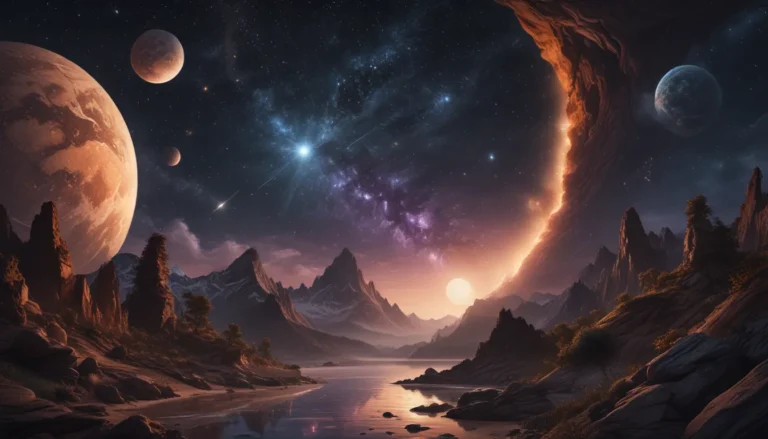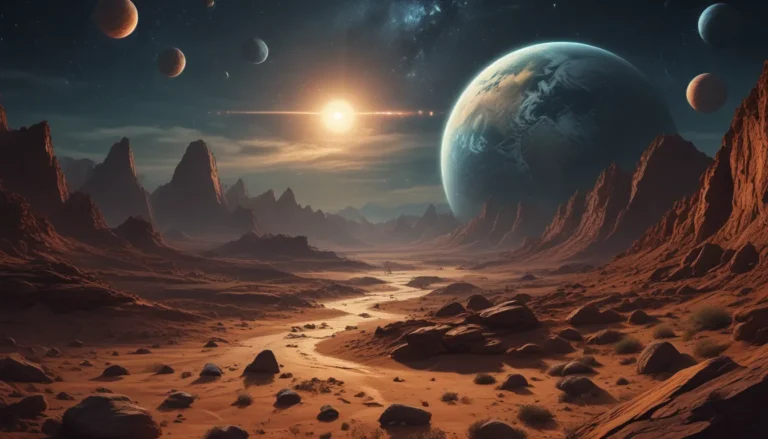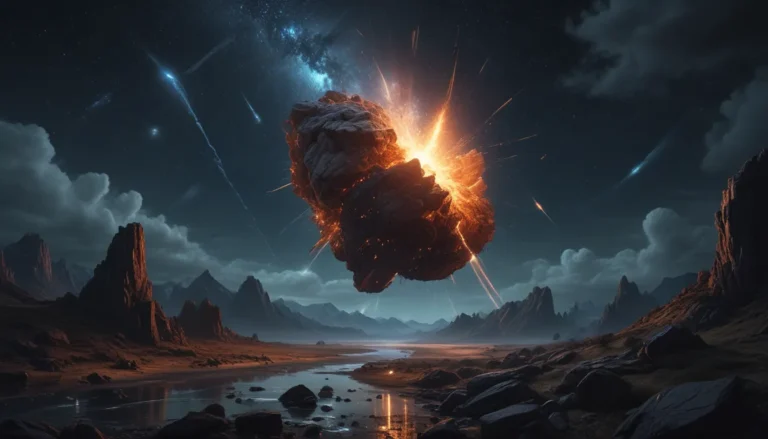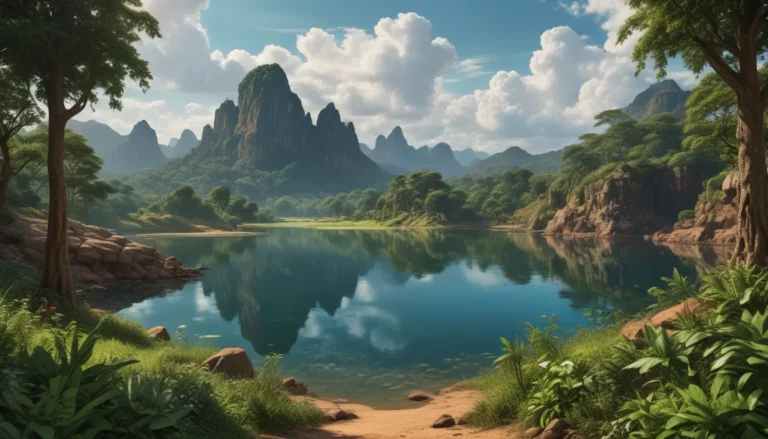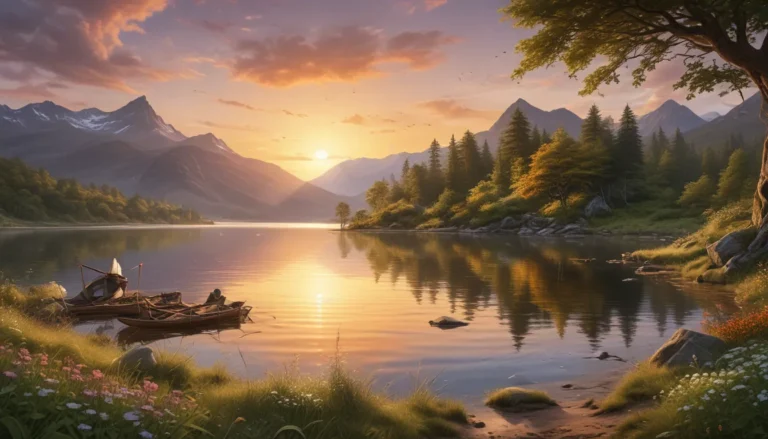The pictures we use in our articles might not show exactly what the words say. We choose these pictures to make you interested in reading more. The pictures work together with the words but don’t take their place. The words still tell you the important facts.
The Barents Sea, a vast and intriguing Arctic region, has captivated explorers and scientists for centuries with its rich marine ecosystem and unique geological features. Stretching between Norway and Russia, this remarkable body of water is teeming with biodiversity and has played a significant role in shaping the history and culture of the surrounding regions. Join us as we delve into the depths of the Barents Sea and uncover 17 astonishing facts that showcase its importance and allure. From its diverse wildlife to its pivotal role in World War II, the Barents Sea is sure to leave you in awe. So, let's embark on a journey of discovery and explore the wonders of this captivating sea.
Exploring the Barents Sea: A Jewel of the Arctic
The Barents Sea, nestled in the Arctic Ocean, is bordered by Norway and Russia, forming part of their maritime boundaries. Covering approximately 1.4 million square kilometers, it is one of the largest marginal seas globally, known for its rich biodiversity and diverse marine ecosystem. Home to a wide variety of marine species, the Barents Sea serves as a vital spawning ground for numerous fish species, supporting a thriving fishing industry. From cod to herring and capelin, the waters of the Barents Sea are teeming with life, making it a significant fishing ground.
The Marvels of the Barents Sea: Discovering its Unique Features
Svalbard Archipelago: A Gem Within the Barents Sea
The Barents Sea encompasses the stunning Svalbard archipelago, a collection of islands and islets renowned for their unique wildlife and breathtaking landscapes. From polar bears to seabirds, the Svalbard archipelago is a haven for a diverse range of species, drawing visitors from around the world to witness its natural beauty.
Extreme Seasons: A Tale of Contrasts
Due to its Arctic location, the Barents Sea experiences extreme seasonal variations in temperature and daylight. Long summer days give way to extended periods of darkness during winter, creating a dramatic contrast that shapes the region's ecosystem and wildlife.
Oil and Gas Reserves: Fuelling Energy Exploration
The Barents Sea is a significant oil and gas producing region, known for its vast reserves and potential for energy exploration. Its untapped mineral resources, including manganese nodules and rare earth elements, further highlight its importance in the energy sector.
Historical Significance: World War II and Beyond
The Barents Sea has a long history of human habitation, with indigenous peoples such as the Sami and Nenets calling its coastal areas home for thousands of years. During World War II, the Barents Sea played a strategic role in naval battles between the Soviet Union and Nazi Germany, emphasizing its military significance.
Preserving the Barents Sea: Conservation and Sustainability
Fragile Ecosystem: Vulnerability to Climate Change
Like many Arctic regions, the Barents Sea's ecosystem is fragile and susceptible to the impacts of climate change. Rising sea temperatures, melting ice, and shifts in species distribution pose significant challenges to the region's biodiversity and ecological balance.
Bird Migration: A Vital Route
During the summer months, the Barents Sea becomes a key migration route for birds traveling to the Arctic to breed. The sea's abundance of food and favorable conditions make it a crucial stop for various bird species on their seasonal journeys.
Arctic Council Focus: Addressing Environmental Issues
As part of the Arctic Council's focus area, the Barents Sea plays a pivotal role in addressing environmental challenges and promoting sustainable development in the region. The unique blend of Arctic and Atlantic water masses in the Barents Sea creates a dynamic marine environment that requires careful conservation and management.
Conclusion: Embracing the Wonder of the Barents Sea
In conclusion, the Barents Sea stands as a remarkable and fascinating body of water with a rich history and unique characteristics. From its vital fishing grounds to its stunning natural beauty, the Barents Sea offers a glimpse into the wonders of the Arctic region. As we continue to explore and learn about this enigmatic sea, our appreciation for its intrinsic value and importance grows. Whether you are drawn to the diverse marine life, the region's historical significance, or its role in global energy production, the Barents Sea has something truly captivating to offer.
FAQs: Exploring Further into the Barents Sea
- Where is the Barents Sea located?
-
The Barents Sea is situated in the Arctic Ocean, north of Norway and Russia.
-
What is the significance of the Barents Sea?
-
The Barents Sea plays a crucial role in global climate regulation, serves as a valuable fishing ground, and hosts potential oil and gas reserves.
-
What is the marine life like in the Barents Sea?
-
The Barents Sea is home to a diverse range of marine species, including whales, seals, cod, herring, and various bird species.
-
Are there any ongoing disputes in the Barents Sea?
-
Historical disputes regarding maritime boundaries between Norway and Russia have been largely resolved through diplomatic negotiations.
-
How has climate change impacted the Barents Sea?
-
Climate change has led to warmer temperatures, reduced sea ice, and significant effects on the region's ecosystem and communities.
-
Is tourism possible in the Barents Sea?
-
Yes, tourism activities such as wildlife watching, fishing, and expedition cruises are popular in the Barents Sea region, offering unique experiences for visitors.
-
What is the largest city near the Barents Sea?
-
Murmansk in Russia, a major port and administrative center, is the largest city located near the Barents Sea.
-
Is the Barents Sea protected?
-
Parts of the Barents Sea are designated as nature reserves to ensure the conservation of its diverse marine habitat and wildlife.
-
Are there any historical landmarks or cultural sites in the Barents Sea area?
-
The Barents Sea region boasts historical landmarks and cultural sites, including the Svalbard Global Seed Vault and pomor heritage sites that showcase its rich history.
-
What are the future prospects for the Barents Sea?
- The Barents Sea is expected to continue playing a vital role in the global energy industry and fisheries sector, while facing challenges related to climate change and sustainable resource management.
The Barents Sea offers a wealth of enchanting wonders waiting to be explored and discovered. Whether you are drawn to its rich biodiversity, historical significance, or environmental importance, the sea's allure is undeniable. As you delve deeper into the mysteries of the Barents Sea, you'll uncover a world of intricate ecosystems, captivating landscapes, and endless opportunities for discovery. Embark on a journey of understanding and appreciation for this extraordinary Arctic region, and let the wonders of the Barents Sea ignite your curiosity and admiration for the natural world.


